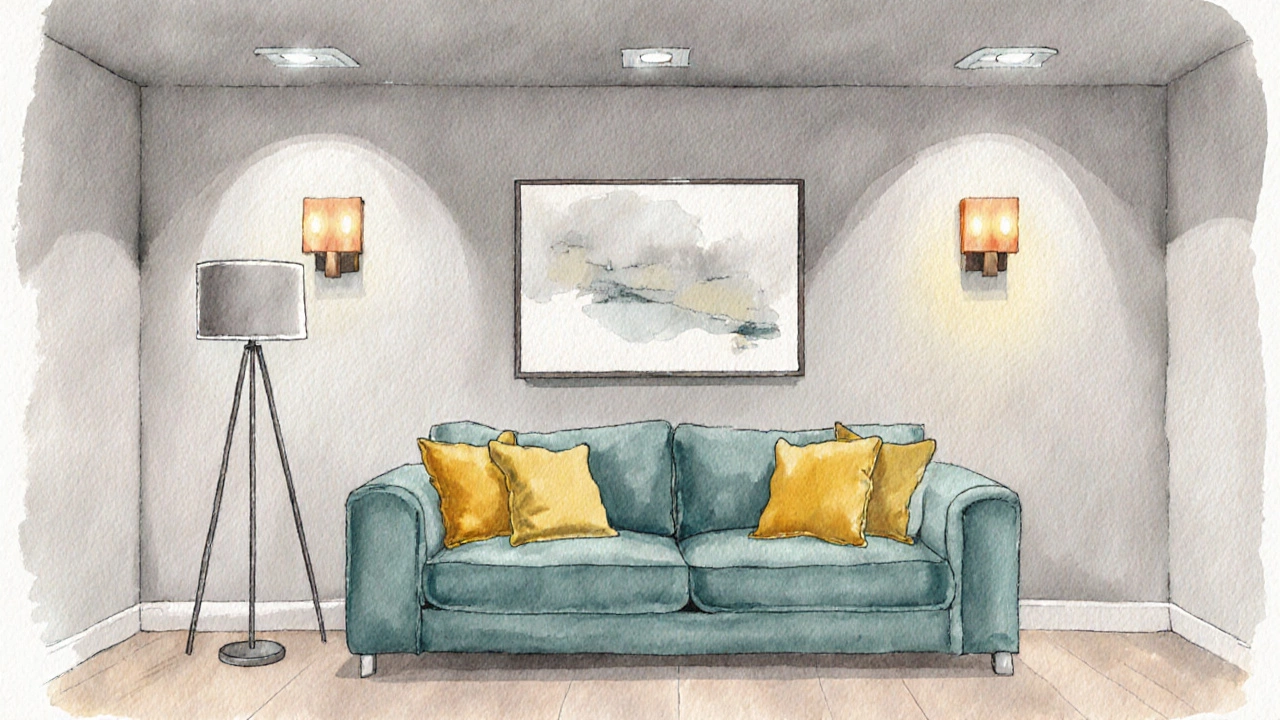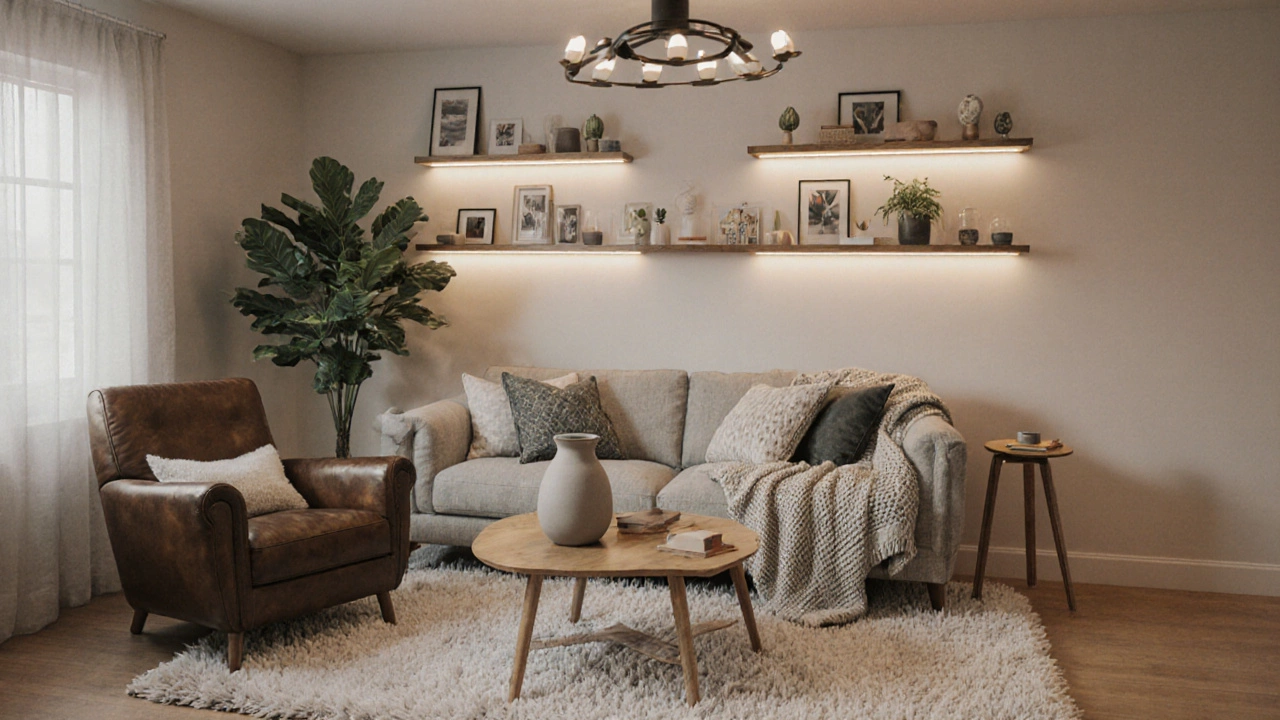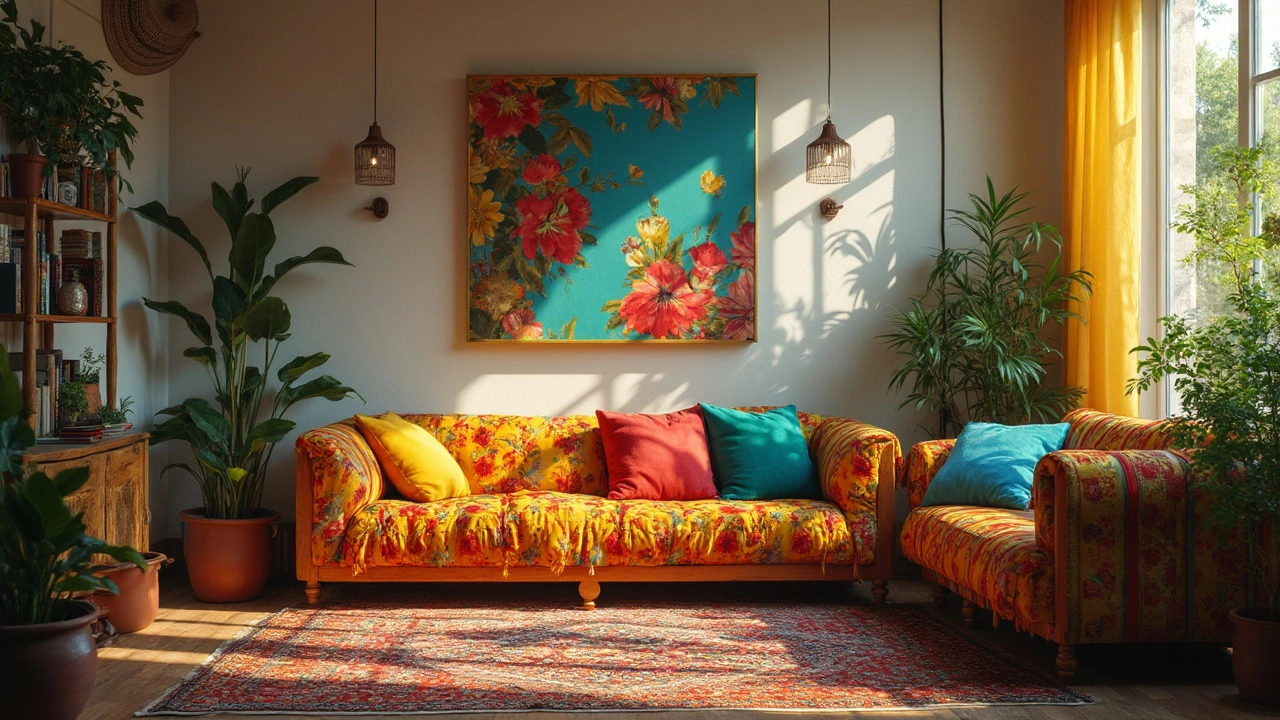When you stare at blank walls and wonder how to turn a plain space into a room you actually love, the answer is simpler than you think. Room decorating is a process that blends color, furniture, lighting, and personal touches to create a cohesive, functional environment. By breaking the project into clear stages you avoid overwhelm, stay on budget, and end up with a space that feels both stylish and lived‑in.
Quick Takeaways
- Start with a purpose and a rough budget before picking any item.
- Choose a color palette that unifies walls, fabrics, and accessories.
- Layer lighting - ambient, task, and accent - for mood and functionality.
- Map furniture arrangement first; then add décor pieces like art and plants.
- Finish with texture and personal items to give depth and personality.
1. Define the Room’s Purpose and Budget
The first step is to answer two simple questions: What will you mainly do in this room, and how much are you willing to spend? A bedroom, a home office, or a living room each demands different furniture priorities and lighting needs. Write down the top three activities (e.g., watching TV, reading, entertaining) and assign a rough dollar range - low (<$1,000), medium ($1,000‑$3,000), or high (>$3,000). This framework stops you from splurging on a decorative rug that never gets used.
2. Choose a color palette
Color sets the emotional tone. Start by picking a dominant hue for the walls - neutral gray, warm beige, or a soft pastel works for most living rooms. Then select two accent colors for pillows, throws, or a statement wall. A reliable rule: 60% dominant, 30% secondary, 10% accent. Use online tools like Adobe Color or the PaintCheck app to test how the shades look together under natural and artificial light.
3. Plan the lighting layout
Good lighting prevents the room from feeling flat. Aim for three layers:
- Ambient - overhead fixtures or recessed LEDs that illuminate the entire space.
- Task - desk lamps, reading lights, or under‑cabinet strips for specific activities.
- Accent - wall sconces, picture lights, or LED strips that highlight artwork or architectural features.
Dimmer switches give you instant mood control, especially in a living room where you shift between movie night and a lively gathering.
4. Sketch the furniture arrangement
Before buying anything, rough‑draw the floor plan on graph paper or use a free app like Roomstyler. Measure doorways, windows, and the room’s total square footage. Place the largest piece - usually a sofa or bed - first, then arrange secondary items (coffee table, side chairs) to maintain a comfortable traffic flow of about 3‑4 feet between pieces.
Key guidelines:
- Keep the main seating area centered around a focal point (television, fireplace, or a large window).
- Leave at least 12‑18 inches of space between furniture and walls to avoid a cramped look.
- Use multi‑functional pieces like storage ottomans to maximize utility.

5. Add wall art and décor
Art is the easiest way to inject personality. Choose pieces that echo the room’s color palette. A large canvas (48×36 inches) works as a statement above the sofa; smaller frames (12×12 inches) can create a gallery wall. Remember the “golden ratio” - arrange frames so the total width is roughly 1.618 times the height of the wall area they cover.
Mix media: photographs, prints, and a textured wall‑shelf for small sculptures or books. Mirrors not only add style but also amplify natural light, which is especially helpful in smaller rooms.
6. Layer textures for depth
Texture turns a flat color scheme into a tactile experience. Combine smooth leather, soft linen, chunky knit throws, and natural wood. A shag rug under the coffee table adds warmth, while a matte ceramic vase provides visual contrast. Stick to three texture families to avoid visual chaos.
7. Personalize with Greenery and Keepsakes
Plants are the ultimate décor element - they purify air and soften hard lines. A tall fiddle‑leaf fig in a corner balances a low sofa, while a row of small succulents on the side table adds a fresh pop. Sprinkle a few family photos, travel souvenirs, or handmade items on shelves to make the space unmistakably yours.
8. Final Walk‑Through and Tweaks
Live in the room for a couple of days before calling it finished. Notice any awkward lighting, cramped corners, or missing storage. Small adjustments - swapping a lamp shade, adding a throw, or moving a side chair - often make a disproportionate impact.

Step‑by‑Step Checklist
| Step | What to Do | Key Tool/Tip |
|---|---|---|
| 1 | Define purpose & budget | Write top 3 uses, set low/med/high budget |
| 2 | Select color palette | 60‑30‑10 rule, use Adobe Color |
| 3 | Plan lighting layers | Ambient + Task + Accent, install dimmers |
| 4 | Sketch furniture layout | Graph paper or Roomstyler app |
| 5 | Add wall art | Use golden ratio, mix media |
| 6 | Layer textures | Combine 3 texture families |
| 7 | Introduce plants & keepsakes | Choose size‑appropriate greenery |
| 8 | Live‑in test & tweak | Adjust lighting or placement as needed |
Common Pitfalls and How to Avoid Them
- Over‑matching: Buying everything in the same shade looks flat. Mix neutrals with a bold accent.
- Ignoring scale: A massive sofa in a tiny room overwhelms. Measure and use proportion guidelines (sofa length ≈ 2/3 room width).
- Skipping function for form: Trendy coffee tables that are too low can make leg‑rest uncomfortable. Test comfort before purchasing.
- Under‑estimating lighting: Relying only on ceiling lights makes evenings feel harsh. Add floor lamps and table lamps for softness.
Budget‑Friendly Alternatives
If your budget sits in the low tier, focus on high‑impact, low‑cost moves: repaint walls yourself, shop second‑hand for vintage frames, use peel‑and‑stick wallpaper for an accent wall, and swap out lamp shades with inexpensive fabric.
Next Steps for Different Scenarios
If you’re decorating a new home: Start with rough floor plans, then follow the steps above.
If you’re revamping an existing room: Keep what works (e.g., an ergonomic desk) and just refresh colors, art, and lighting.
If you’re on a tight schedule: Prioritize lighting and furniture placement first; add décor in the evenings.
How do I choose the right rug size for a living room?
Measure the seating area and add at least 18‑24 inches of rug visible around each piece of furniture. For a three‑piece sofa set, a 9×12 foot rug works well in most standard living rooms.
Can I mix modern and vintage pieces without clashing?
Yes - anchor the room with a neutral color palette, then let the contrast between sleek lines and aged textures become a design statement. Keep the scale balanced so one style doesn’t dominate.
What’s the best lighting for a small bedroom?
Combine a dimmable ceiling fixture with bedside wall sconces or a sleek table lamp. Use warm LEDs (2700‑3000 K) to create a cozy atmosphere without taking up surface space.
How often should I repaint a room?
Every 5‑7 years for high‑traffic areas, or whenever the paint starts to chip, fade, or no longer matches your décor style.
Is it okay to use LED strip lights as the main room lighting?
LED strips are great for accent lighting but shouldn’t replace ambient lighting. Pair them with a ceiling fixture or recessed LEDs for balanced illumination.


